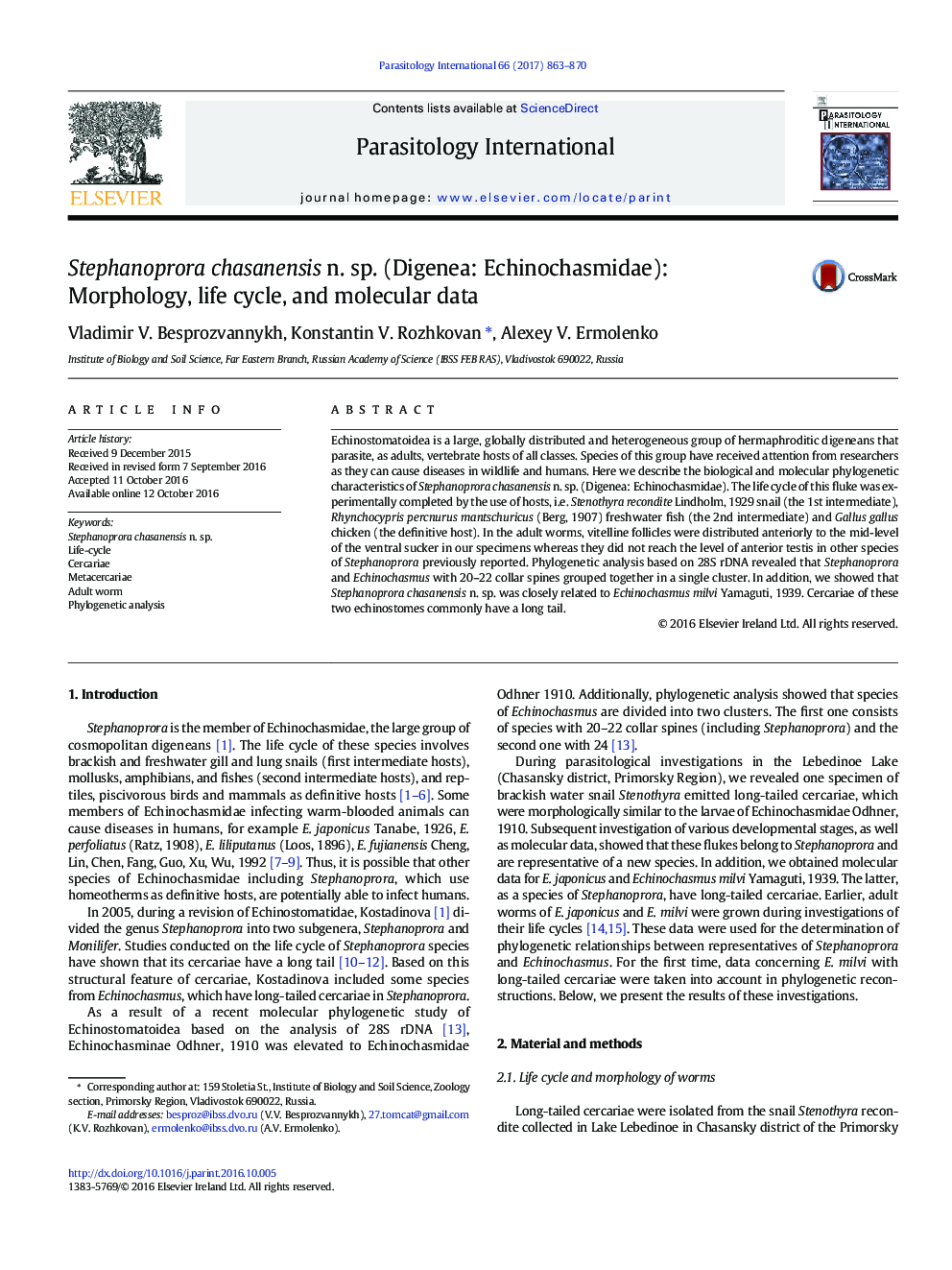| Article ID | Journal | Published Year | Pages | File Type |
|---|---|---|---|---|
| 5674301 | Parasitology International | 2017 | 8 Pages |
â¢The life cycle of Stephanoprora chasanensis n. sp. was described.â¢Morphological data confirmed that this species belongs to Stephanoprora.â¢First, second and definitive hosts for this species were established experimentally.â¢S. chasanensis n. sp. differs from other Stephanoprora by length of vitelline fields.â¢Phylogenetic position of Stephanoprora and Echinochasmus is discussed.
Echinostomatoidea is a large, globally distributed and heterogeneous group of hermaphroditic digeneans that parasite, as adults, vertebrate hosts of all classes. Species of this group have received attention from researchers as they can cause diseases in wildlife and humans. Here we describe the biological and molecular phylogenetic characteristics of Stephanoprora chasanensis n. sp. (Digenea: Echinochasmidae). The life cycle of this fluke was experimentally completed by the use of hosts, i.e. Stenothyra recondite Lindholm, 1929 snail (the 1st intermediate), Rhynchocypris percnurus mantschuricus (Berg, 1907) freshwater fish (the 2nd intermediate) and Gallus gallus chicken (the definitive host). In the adult worms, vitelline follicles were distributed anteriorly to the mid-level of the ventral sucker in our specimens whereas they did not reach the level of anterior testis in other species of Stephanoprora previously reported. Phylogenetic analysis based on 28S rDNA revealed that Stephanoprora and Echinochasmus with 20-22 collar spines grouped together in a single cluster. In addition, we showed that Stephanoprora chasanensis n. sp. was closely related to Echinochasmus milvi Yamaguti, 1939. Cercariae of these two echinostomes commonly have a long tail.
Graphical abstractDownload high-res image (239KB)Download full-size image
